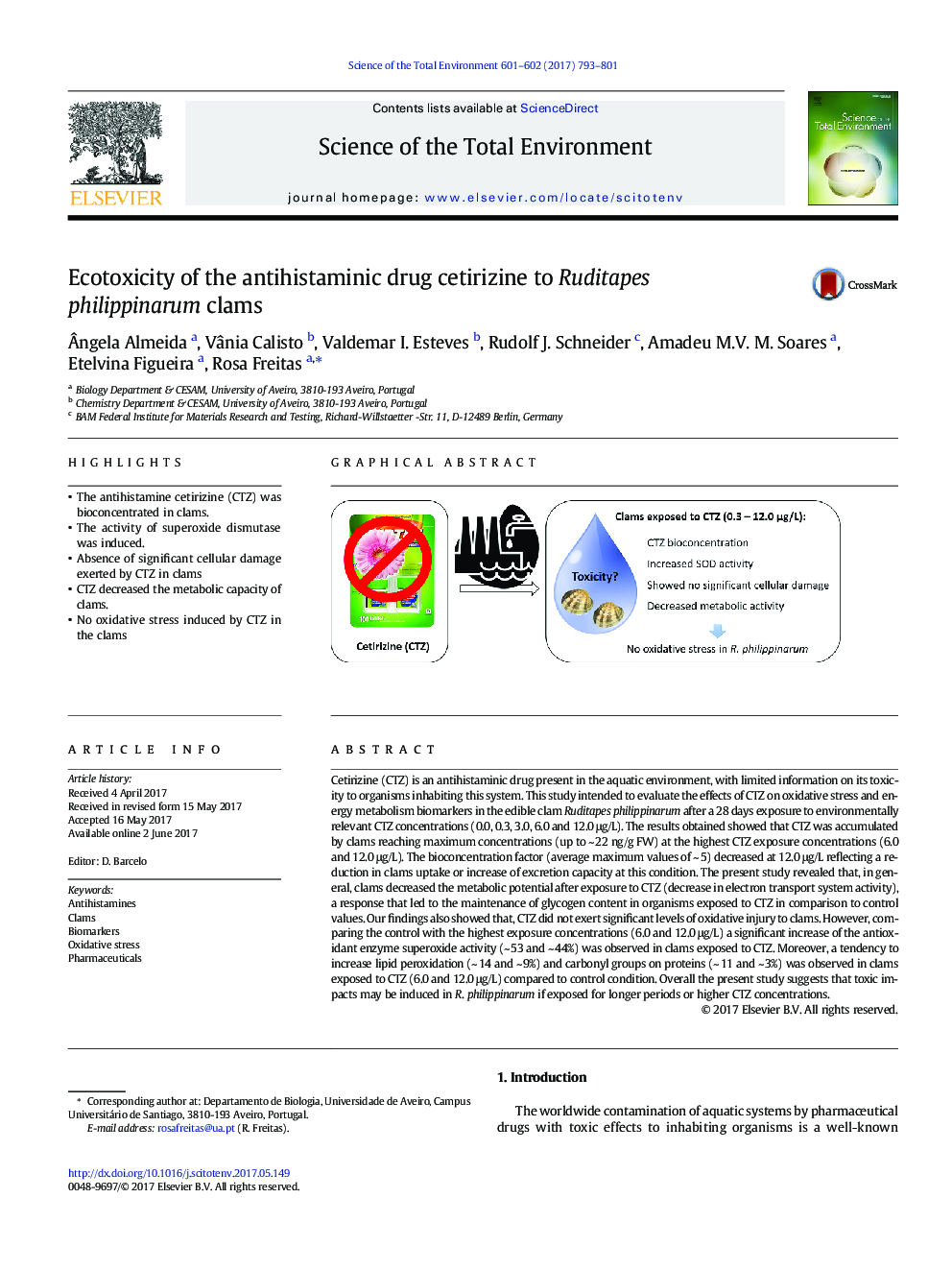| کد مقاله | کد نشریه | سال انتشار | مقاله انگلیسی | نسخه تمام متن |
|---|---|---|---|---|
| 5750435 | 1619697 | 2017 | 9 صفحه PDF | دانلود رایگان |

- The antihistamine cetirizine (CTZ) was bioconcentrated in clams.
- The activity of superoxide dismutase was induced.
- Absence of significant cellular damage exerted by CTZ in clams
- CTZ decreased the metabolic capacity of clams.
- No oxidative stress induced by CTZ in the clams
Cetirizine (CTZ) is an antihistaminic drug present in the aquatic environment, with limited information on its toxicity to organisms inhabiting this system. This study intended to evaluate the effects of CTZ on oxidative stress and energy metabolism biomarkers in the edible clam Ruditapes philippinarum after a 28 days exposure to environmentally relevant CTZ concentrations (0.0, 0.3, 3.0, 6.0 and 12.0 μg/L). The results obtained showed that CTZ was accumulated by clams reaching maximum concentrations (up to ~ 22 ng/g FW) at the highest CTZ exposure concentrations (6.0 and 12.0 μg/L). The bioconcentration factor (average maximum values of ~ 5) decreased at 12.0 μg/L reflecting a reduction in clams uptake or increase of excretion capacity at this condition. The present study revealed that, in general, clams decreased the metabolic potential after exposure to CTZ (decrease in electron transport system activity), a response that led to the maintenance of glycogen content in organisms exposed to CTZ in comparison to control values. Our findings also showed that, CTZ did not exert significant levels of oxidative injury to clams. However, comparing the control with the highest exposure concentrations (6.0 and 12.0 μg/L) a significant increase of the antioxidant enzyme superoxide activity (~ 53 and ~ 44%) was observed in clams exposed to CTZ. Moreover, a tendency to increase lipid peroxidation (~ 14 and ~ 9%) and carbonyl groups on proteins (~ 11 and ~ 3%) was observed in clams exposed to CTZ (6.0 and 12.0 μg/L) compared to control condition. Overall the present study suggests that toxic impacts may be induced in R. philippinarum if exposed for longer periods or higher CTZ concentrations.
121
Journal: Science of The Total Environment - Volumes 601â602, 1 December 2017, Pages 793-801